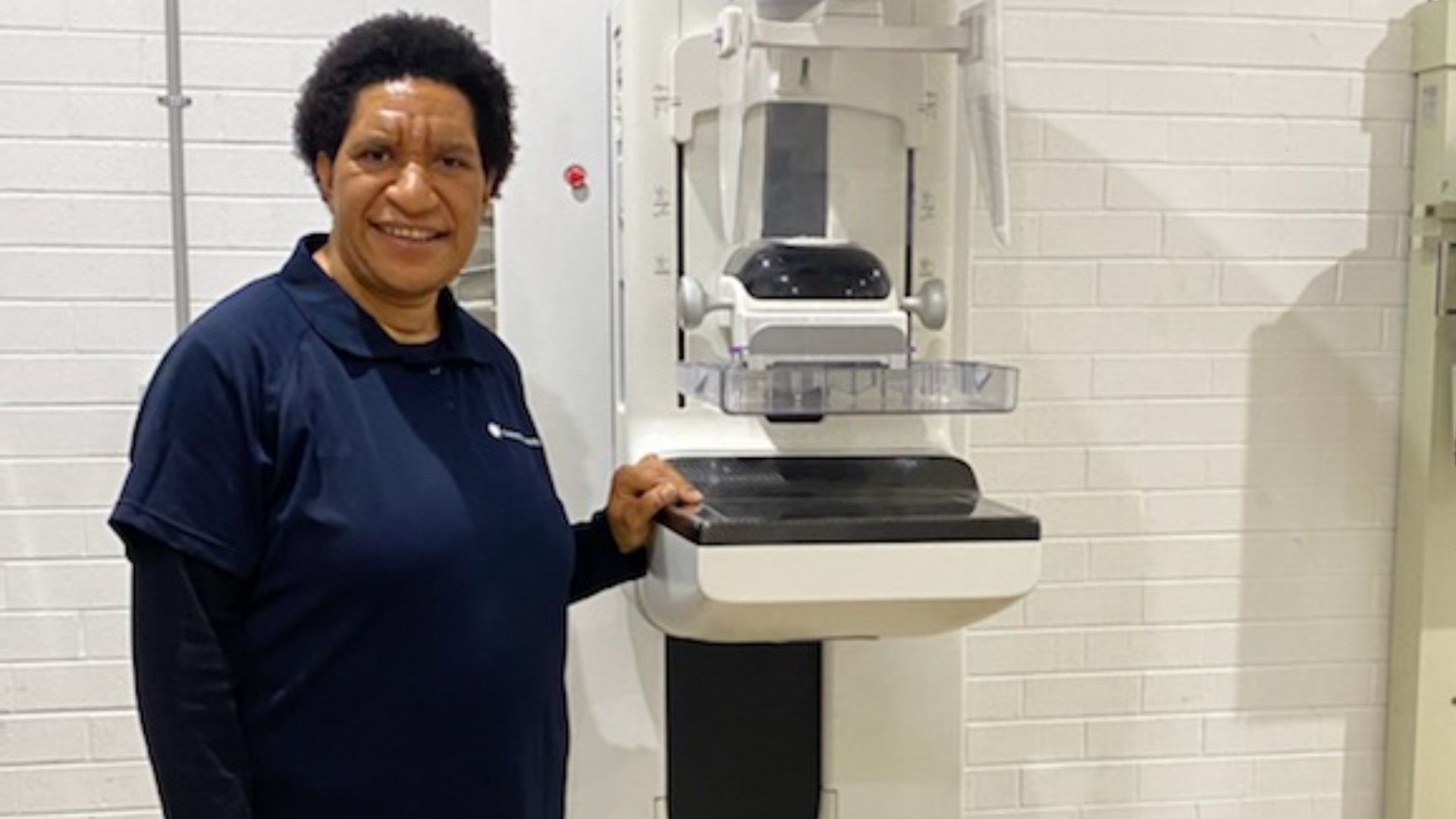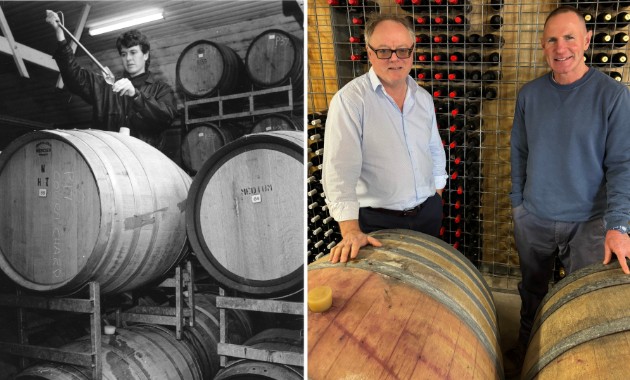As Pink Ribbon Day approaches, a Charles Sturt University student is furthering her education to make meaningful contributions to the diagnosis and life expectancy of breast cancer patients, particularly in her home country of Papua New Guinea.
A Charles Sturt University PhD student has been motivated towards improving mammography practice and advocating for the advancement of services for women in her home country following her harrowing experience of watching women go home to die because they cannot afford life-saving treatment.
Mrs Ruth Pape was born and raised in Papua New Guinea and completed a Bachelor of Medical Imaging Science at the University of Papua New Guinea through a four-year government scholarship.
She has completed residential training programs and worked as a full-time diagnostic radiographer and taught medical imaging science courses in her home country, and is now studying in the Charles Sturt School of Dentistry and
Medical Sciences in Wagga Wagga.
During seven years working at Pacific International Hospital Mrs Pape was one of the radiographers who imaged more than 3,000 women for breast cancer using mammography.
“I saw many women with advanced stages of breast cancer participating in the free breast screening program, however, some of these women could not afford radiation therapy or chemotherapy to treat their cancers and went home to die,” she said.
“This situation triggered my interest to further increase my knowledge to undertake postgraduate studies in early breast cancer detection using mammography as a screening tool.”
Mrs Pape is currently a first-year PhD student in medical radiation science, specialising in mammographic image quality at Charles Sturt University in Wagga Wagga. The title of her research is ‘Mammography positioning: The impact of the thorax on mammographic image quality’.
The research aims to investigate the influence of body shape, specifically the length and shape of the thorax, on the ability to include all of the breast on an image.
It will also look at the impact of the thorax on mammography positioning and image quality criteria.
Mrs Pape said a better understanding of the impact of the thorax on image quality will support improved positioning and improve opportunities for diagnosis.
“This research will facilitate a good understanding of the female body, how the shape of the body impacts the amount of breast tissue imaged using contemporary mammography equipment and inform the perfect, good, moderate, inadequate (PGMI) image evaluation system used by BreastScreen Australia,” she said.
About 65 Australian women each day are told they have breast or gynaecological cancer and Mrs Pape said causes like Pink Ribbon Day, held on Sunday 23 October, are great opportunities to raise awareness.
Early diagnosis of breast cancer through mammography screening is crucial, said Mrs Pape, who wants men and women to be aware of the signs and symptoms of breast cancer.
She said Pink Ribbon Day is a chance to educate and raise awareness to ensure more lives are saved.
“Raising awareness in the fight against cancer is important in beating it,” she said.
“Breast cancer affects people regardless of race, gender, culture, etc … it is therefore important we support Pink Ribbon to aid vital services, research and prevention programs.”
Associate Head of the Charles Sturt School of Dentistry and Medical Sciences in Wagga Wagga Associate Professor Kelly Spuur teaches mammography theory in the Bachelor of Medical Radiation Science (Diagnostic Radiography).
She said students have been making meaningful contributions, through work and research, providing imaging services and breakthroughs in this field. She said Mrs Pape’s work will add to the important body of work already created by Charles Sturt students and alumni.
“There is very little research that informs what radiographers do in the mammography room,” she said.
“Charles Sturt HRD students have a track record in breast imaging research at a grass roots level. Our students have recently completed a study on imaging women with cardiac implantable electronic devices (pacemakers/defibrillators) and have published a number of studies on mammographic image quality, as well as on imaging the augmented breast (breast implants).
“Working with students to provide an evidence base for the profession has been extremely rewarding.”
Professor Spuur’s clinical expertise is in diagnostic and screening mammography and mammography is also her key research focus. She also regularly performs mammography services for BreastScreen NSW to maintain her scope of practice.
She said many students only consider mammography as a career for the first time when they are taught about breast anatomy and physiology, breast cancer incidence, clinical pathways, differences between breast screening and diagnostic mammography and advances in technology as part of their degree.
Some female fourth-year radiography students are able to receive formal training during placement and some have obtained employment in the modality after graduation.
“I find that the theoretical content does spark interest in pursuing the modality,” she said.
“As mammography is typically a female domain the real benefit male students get during their undergraduate study is to be able to see the links breast cancer diagnosis has to other imaging such as CT, MRI and ultrasound which they themselves may perform as a part of the imaging pathway.”
While mammography is a female-dominated industry, Professor Spuur said it is not only females afflicted with breast cancer.
According to the Breast Cancer Network Australia, one in 555 men, compared to one in seven women, are expected to be diagnosed with breast cancer in 2022.
“Although uncommon, men can also get breast cancer and the imaging we do is exactly the same as for women,” she said.
“Although there is still much stigma around male breast cancer diagnosis, I am pleased to say that there are much better resources and support available for men now than there were at the beginning of my career.”






Social
Explore the world of social